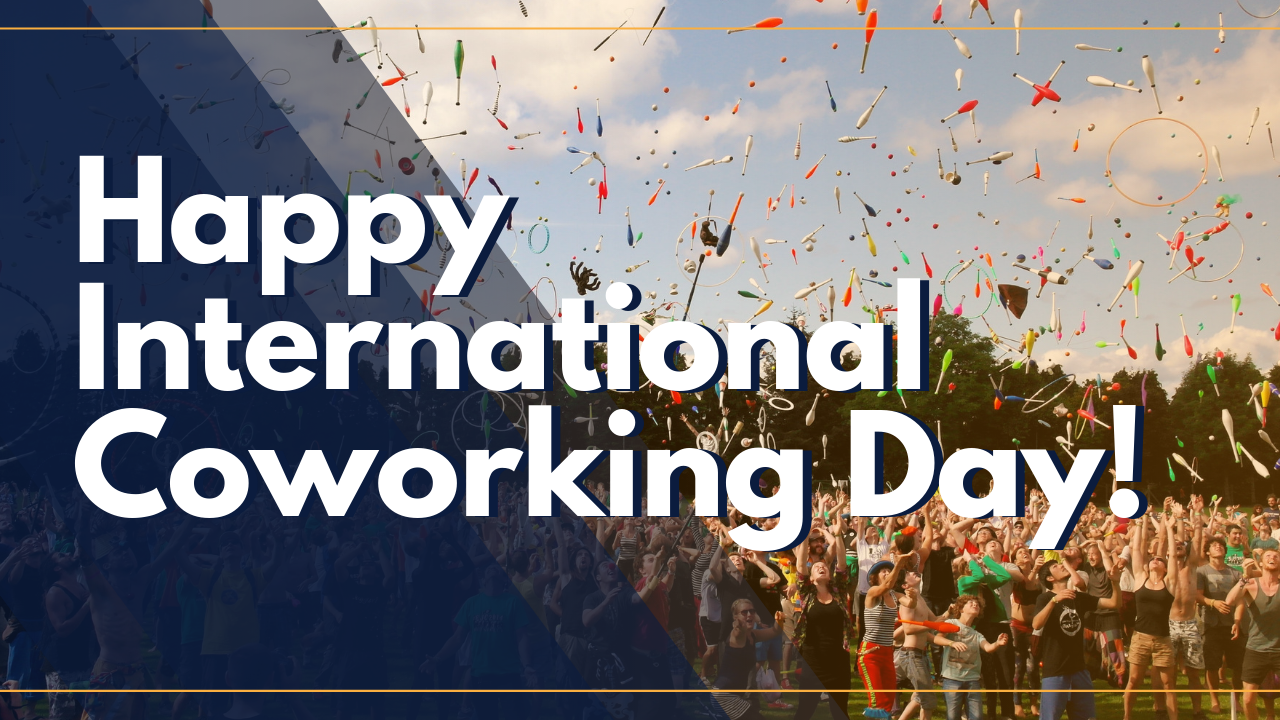- This week, Cat Johnson hosted a PPC Marketing training session alongside Karina Patel, Marketing Director at Pacific Workplaces and Cloud VO.
- PPC is a form of paid search advertising and companies pay only when one of their ads is clicked.
- During the training session, Patel focused on the sponsored listings that appear at the top of Google search results.
What is PPC? How does it work? Why is it beneficial for coworking spaces?
These questions, and plenty more, were answered in detail during a digital marketing webinar this week. The training session was hosted by content marketer Cat Johnson as part of a series of monthly marketing workshops for coworking owners and operators.
Cat was joined by Karina Patel, Marketing Director at Pacific Workplaces and Cloud VO, to walk attendees through the world of paid search and how it works in a step-by-step fashion.
Suggested Reading: 5 Things Coworking Operators Need to Know About PPC Marketing
Here’s an overview of those steps and what coworking operators stand to gain from using PPC to market their space.
What is PPC? Why Use it?
PPC — or Pay Per Click marketing — is a form of paid search. Advertisers create online adverts that appear in various places around the web, especially online search results, and pay a fee each time one of their ads is clicked.
There are different versions of PPC but in this workshop, Karina focused on the sponsored listings that appear at the top of Google search results.
She explained that it enables operators to target their adverts to the type of people they want to attract to their workspaces; the ads can be designed in such a way that they only appear when specific search terms are typed into a Google search. Due to the targeted nature of these ads, they can be highly beneficial in helping operators to attract members, drive potential customers to their site, convert enquiries to sales, and increase brand awareness.
Getting Started
First, go to ads.google.com and create an account. It’s worth putting a little time aside to watch the tutorials and gain some extra insight into the advertising platform.
Then, choose a campaign:
- Search – these are the sponsored ads you see at the top of the Google search results page.
- Display – display ads seem to follow you around the web. They appear in various websites after you have clicked on a previous ad or interacted with a brand.
- Video – ads appear in the YouTube search results or before, during, and after videos have been played.
For the purpose of this webinar, Karina focused on ‘Search’ ads.
Next, choose your goals. Decide whether you want to generate more leads to your business, more website visits, or more sales. Don’t forget, if you have more than one goal, you can set up multiple campaigns for different purposes.
Once you’ve named your campaign, you’ll need to select your location. For flexible workspaces this is a very important part of the process; Karina advises starting at the highest level — ie. ‘United States’ — and then drilling down. This is known as adding layers.
“Layering is recommended for anyone with localised services, such as centers with coworking or meeting rooms,” says Karina. “Radius targeting works well if you’re in a small city, as you can hone in on local neighbourhoods. But don’t use it in mountainous areas or coastal cities, otherwise half of your radius will be in the water!”
For these areas, Karina recommends using zip codes for a more targeted result.
Bidding and Setting a Budget
The next part of the process focuses on your daily budget. Remember, you pay for every click, so it’s important to set your bidding budget carefully.
“Opt for the ‘Maximize Clicks’ setting, as this is the simplest one to manage and it’s ideal for first-time PPC users,” advises Karina. “Later you might want to switch to ‘Manual CPC’ — this gives you more control over your budget allocation and bidding.”
As for setting a budget, be prudent on your first campaign and start small.
“To determine your budget, consider how much a new member is worth to you. Let’s say a new member is worth $200 per month and your goal is to acquire 2 new members per month. Take this $400 and divide it by 30.4 to get a daily figure ($13). Now we know that your daily budget should be a maximum of $13.”
There are other ways to approach bidding, such as outbidding, but Karina advises against this approach. “It’s tough and expensive to try and outbid the likes of WeWork.”
Choosing Keywords
How do you know which terms people will type into a search engine? The easiest way is to ask your members.
“Ask them how they found you. Rather than a blanket survey, start with the ones you are comfortable speaking with and ask them how they found you, and what they searched for.”
Of course, Google has a number of inbuilt tools to help you pinpoint the best search terms for your campaign. Try Google Trends, which reflects the most (and least) popular terms for your specific industry based on regional searches and historic data.
Keyword Planner is another useful tool that gives you ideas for search terms. Simply enter terms related to your website or landing page and the product or service you are building ads for, and Google will suggest relevant keywords along with their search volume.
Ad Copy
Writing ad copy is trickier than you think. The main parts of a paid search ad are:
- Headline 1 – this is the first thing people see, so make it as relevant as possible to the main search query.
- Headline 2 – this should offer some sort of benefit to the audience. Think about how your workspace solves your members’ problems.
- Headline 3 – this should contain additional information, such as location or amenities.
- Description – why should they do business with you? Keep it clear and concise.
It’s very important that your headline and description correlates with the subject of your landing page. For example if the landing page is all about coworking memberships, don’t build an ad with a headline of ‘Virtual Mail Plans’.
This isn’t just User Experience 101. It can also impact your Quality Score.
Your Quality Score is Google’s way of verifying that you aren’t trying to mislead users. Ads are scored out of 10, and while a poor score (typically 5 or under) will lead to your ads getting suppressed, a good score will see your ad getting placed higher up the page, above your competitors’ ads. So it’s certainly worth playing by the rules.
“Google verifies your ad to make sure that what you say on your ad is reflected on your landing page, which helps prevent clickbait.”
How do you improve your score?
“Think about having a line from your ad to the landing page,” says Karina. “If your landing page focuses on ‘coworking space San Francisco’, did you have ‘coworking’ and ‘San Francisco’ in your ad? If not, you could be marked down.”
As for the landing page itself, it also plays a role in your score.
“You should have easy navigation; crawlable text; links to other pages; a fast page loading time; and a clear purpose to your landing page. What is your call to action? How do people convert? Whether you want them to watch a video, download a PDF, fill out a form, or click to book, it should be clear and obvious what you want them to do.”
Next Steps
Once your first ads are up and running, Karina advises letting them run for a period of 30 days. In the meantime, run reports in Google dashboard to see how they perform and to monitor conversions. Make adjustments, refine your ads, and keep checking the data.
For further information on PPC for the coworking industry, you can find resources and training follow-up guides at catjohnson.co/ppc.
Cat Johnson’s next Coworking Content Training is ‘13 Ways to Attract Members with Content Marketing’ on April 24th, 2019. Find out more and register your interest here.


 Dr. Gleb Tsipursky – The Office Whisperer
Dr. Gleb Tsipursky – The Office Whisperer Nirit Cohen – WorkFutures
Nirit Cohen – WorkFutures Angela Howard – Culture Expert
Angela Howard – Culture Expert Drew Jones – Design & Innovation
Drew Jones – Design & Innovation Jonathan Price – CRE & Flex Expert
Jonathan Price – CRE & Flex Expert












